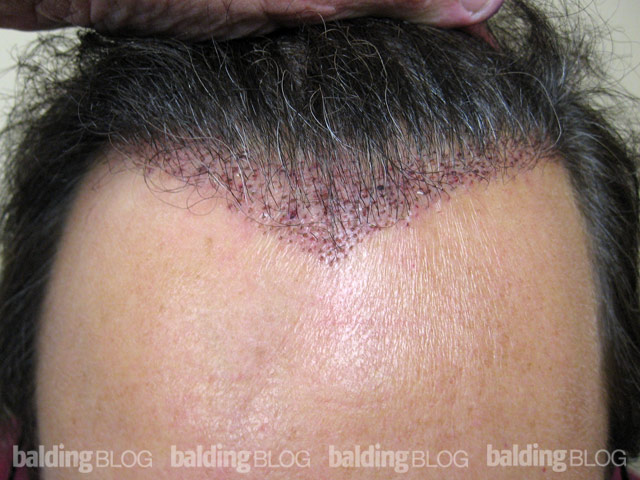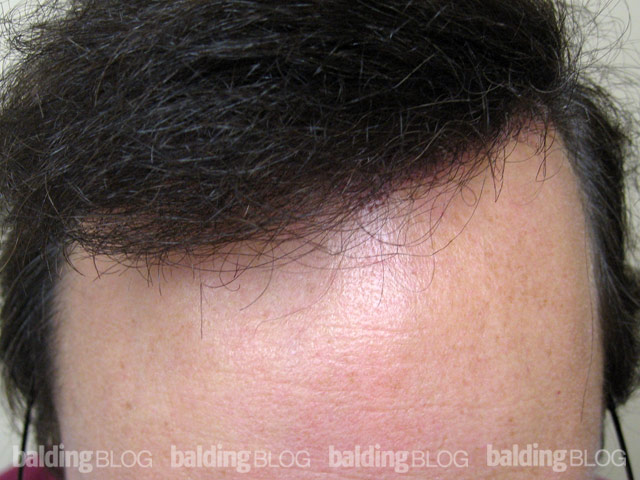I am day 4 post op right now. I have been pouring shampoo-filled water on my head followed by a round of conditioner. I am not touching my scalp at all except for gently massaging around the donor area a couple of times. At what point should i change how i wash. Can you please detail how to wash my hair when it is time to change what i am doing now? Also I still have pain in the donor area. Is this normal? How long will this last? Lastly, are there any post-op products that promote scabs to fall off and protect against infection? Thank you for taking the time to read this and for your reply.

For starters, you should be asking your transplant surgeon these question. Of course, I will do the best I can to help and will expand upon your question to supply other bits of information that may help my general readership.
Washing your head after a hair transplant has been arbitrary among hair transplant surgeons for years. The dilemma is that there is a risk of grafts dislodging in the first few days after surgery if the grafts get manipulated. On the other hand, washing reduces the chance of scab formation which gives you acceleration of the healing and normalcy of your scalp. Fortunately, this issue was studied recently (see this PDF file — Graft anchoring in hair transplantation). This study showed that presence of scabbing after surgery extends the interval that grafts are at risk of being dislodged. The study emphasizes that preventing scab formation would shorten the high risk period during which new grafts may fall out. I recommend frequent, but gentle hair washing in the first few days following you operation without rubbing or scratching in the recipient area. Professional hair washing for the first days after surgery is advisable and I personally offer this service to all of my patients during this time. Some products have been claimed to reduce the scabbing and infection after surgery with no documented evidence to support them.
Fortunately, infection is not a common complication after a hair transplant in healthy individuals, thanks to good blood supply of the scalp skin. As a general rule the donor and recipient wounds are almost completely sealed in within a few hours and certainly by the next day after a hair transplant. External factors should not cause infection in these areas beyond this time. If you do not learn to wash with some vigor, then the evidence of a hair transplant in its healing phase may take weeks to disappear rather than a day or two (crusts that are not washed away in the first or second day tend to linger for weeks). The actual details of how to wash should be obtained from your doctor. After a week, if the scabs are still there, you can wash your hair and then leave the shampoo on for 10 minutes or so, gently massaging the scabs after the 10 minute waiting period.
Folliculitis (a cyst in the recipient area which may become infected) is the most common cause of post operative infection in people who do not pick on their transplanted site. For those that pick, the infection risk rises. There are a number of factors that contribute to these cystic ‘pimples’ that appear after 4-6 weeks. Some people believe that these are caused by remnants of hair left behind from the grafts or are foreign body reactions to the glands of the hairs which may survive below the skin after the hair is shed. These glands (which lie along the hair shaft about 3 mm down from the skin) almost certainly produce sebum (a waxy secretion) which can not exit the skin, because it needs a hair shaft to find its way out. These cysts are best treated with warm soaks and frequent shampoos to promote their external drainage. When a doctor employs staff without extensive experience or with poor eyesight, grafts are put in one on top of another (piggybacking), which buries the first graft. These buried grafts causes cysts that frequently get infected and at times require antibiotics or even surgical drainage.
Pain in the donor area could persist for the first 2 or 3 days after surgery. Soreness continues to subside within the first week, and rarely require pain medications after the first day. Mild numbness in the donor area may persist for a few weeks.


 I generally recommend no sex for 15 years, no walking more than 1/4 mile for 4 years… no, no… I’m just kidding.
I generally recommend no sex for 15 years, no walking more than 1/4 mile for 4 years… no, no… I’m just kidding.
